An induction hob is by far the best way to cook. Ever. There are so many advantages to cooking with an induction hob and they easily outweigh the very few cons we’re sharing everything we wish we’d known before buying an induction hob.
I’m the first to admit that cooking isn’t my favourite ever way to spend time, so when I share anything even remotely food-related, you’ll know that it’s something I think is life-changing and our new induction hob is just that. It’s fantastic.
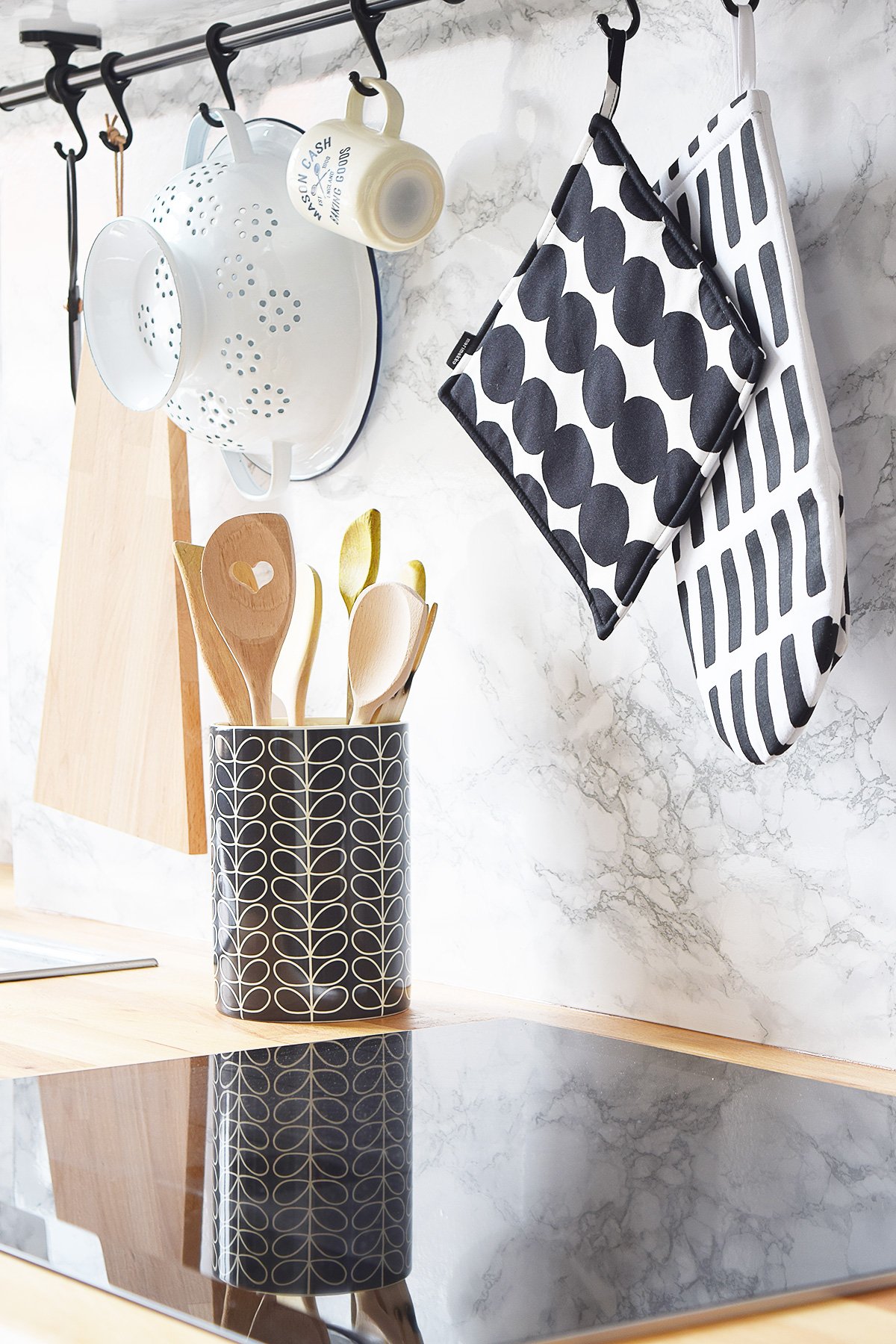
So, what do you need to know before buying an induction hob?
There are so many different styles, designs and induction hob brands to choose from that making a decision can feel completely overwhelming. A lot of things will come down to personal preference and your budget but it’s also important to take your kitchen design and cooking preferences into account, too.
What to look out for when buying an induction hob
1. Size & Space Requirements
Induction hobs require slightly more installation height than other hobs. The air has to be able to circulate around it so, if you’re installing an induction hob in an existing kitchen, you may have to make a couple of adjustments.
We had to lower our oven which is directly under the induction hob so that there would be a gap large enough for the air to circulate around the hob. It wasn’t a big job and it was well worth the extra pfaffing to be able to have an induction hob. It is something worth taking into consideration though, especially if you’re installing an oven underneath.
Ideally, we would have liked to install a wider induction hob with space for more pans but because of the additional installation depth, it wasn’t possible as we would have needed to cut a chunk out of our dishwasher and washing machine on either side of the hob.
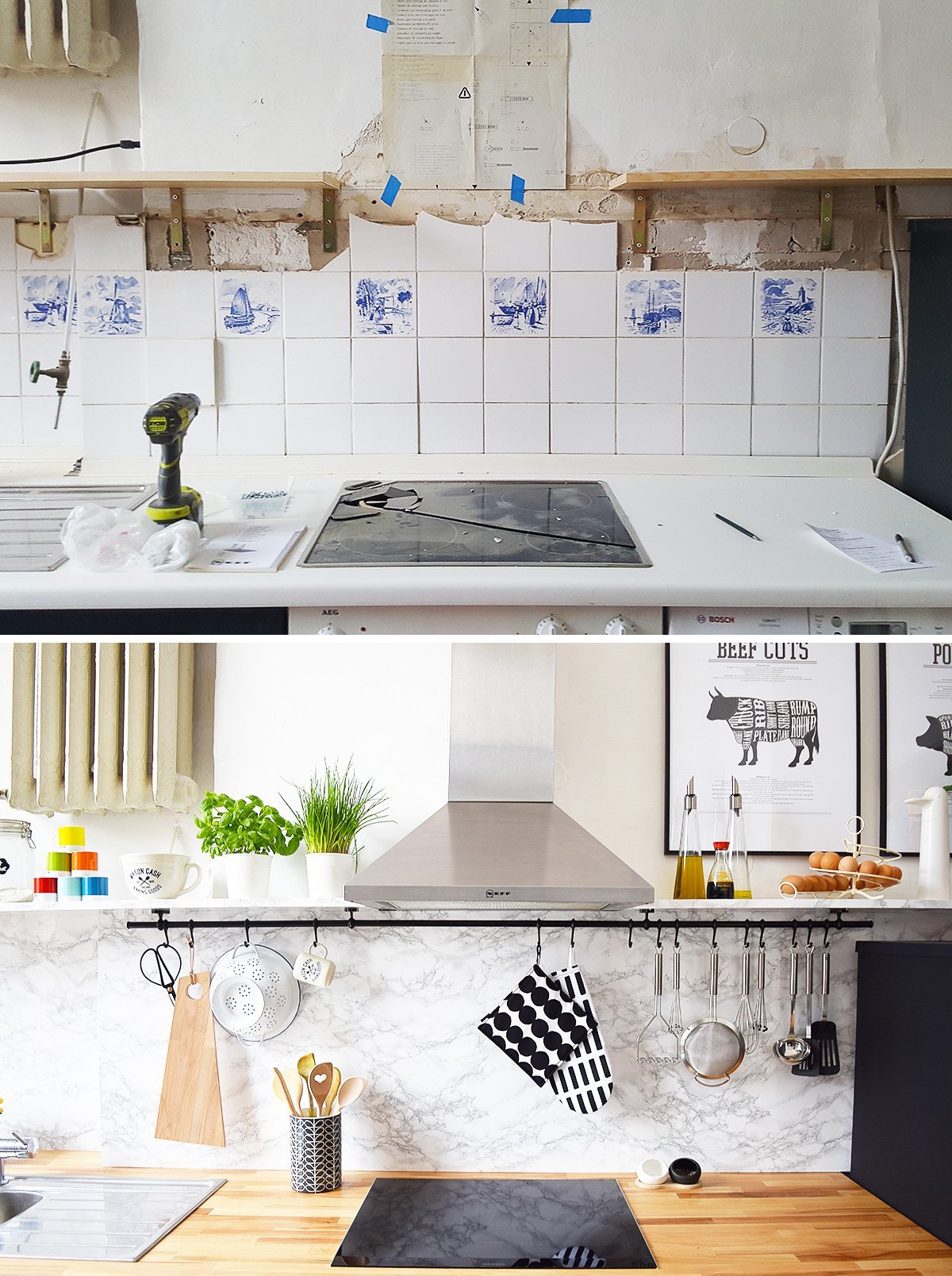
2. Noise Levels
Some induction hobs make a humming sound when you place the pans on them. We’ve now tried three different induction stoves and the noise levels varied slightly (although none of them was very loud). The sound also reduces when the pan warms up.
If you think that this is something that would bother you, it’s definitely a good idea to look at the noise levels of the induction hob or, better yet, see if you can find the model you want at a showroom to give it a real-life test before you make a purchase.
The Siemens induction hob we bought was the quietest out of all of the induction hobs we’ve used but there was still some sound so it’s something to be aware of.
3. Design & Pan Size Options
Opt for an induction hob with zones rather than specific rings.
One of the best things about induction hobs are cooking zones rather than specified spots where you have to place your pan. The induction hob will automatically recognise exactly where the pan is even if you move it and will only provide energy to that spot.
Although we would have originally liked a wider hob with space for 5 pans, the induction zones allow you to place multiple pans in the same zone and you can even combine zones meaning that it’s possible to use 5 pans although it’s just a regular-sized hob. It’s super practical, flexible and is a function we used often.
One of the best tips we received when we bought our hob was to get one with an edge. As usual, I wanted ours to be as minimalist as possible, so really didn’t want a chunky edge which is why we opted for a hob with super slim side profiles.
The stainless steel sides are almost invisible and provide protection in case you drag a pan across your worktop and catch the edge of your hob. Perfect for clumsy people like Jan and me!
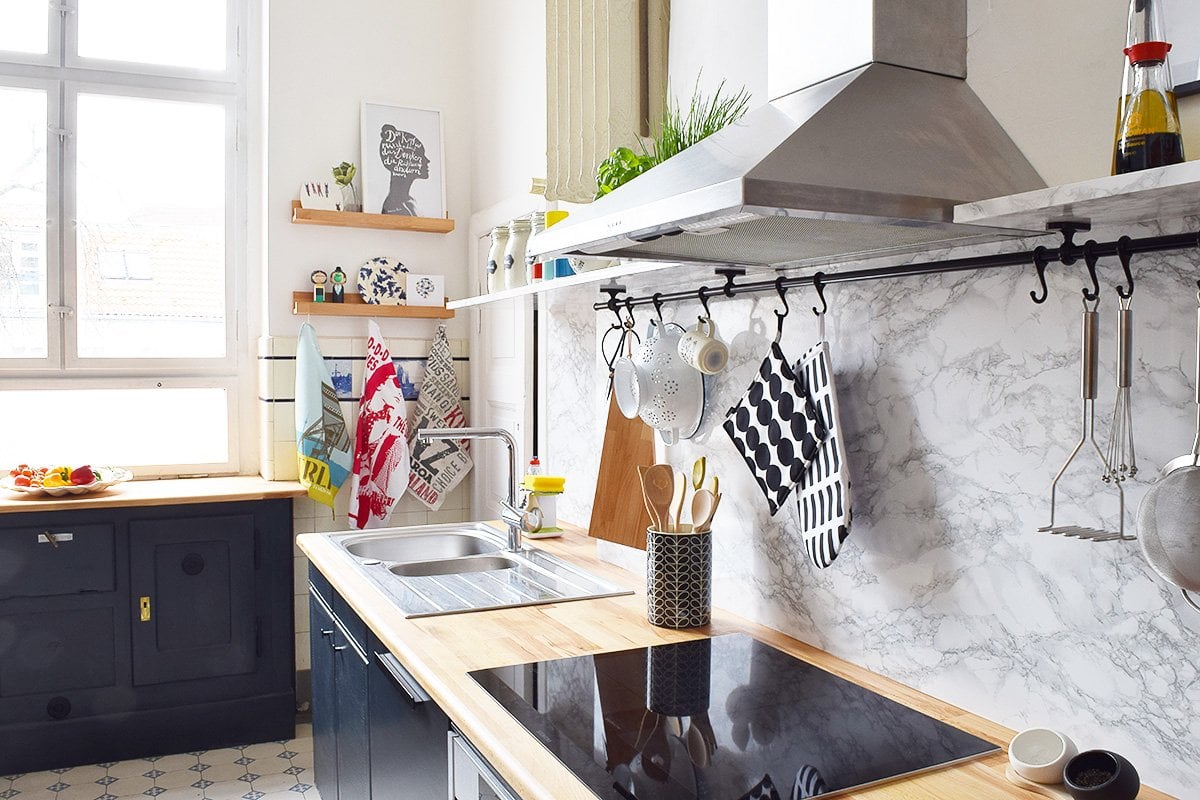
What are the pros and cons of induction hobs?
Having used our induction hob for a while I can honestly say that we couldn’t be happier with the induction hob that we have. Obviously, there are huge differences in quality, price and function depending on which induction hob you choose but our Siemens induction hob is fantastic and we are actually going to buy the same one for our new home because we were so happy with it.
As well as being pretty, or at least as pretty as possible when it comes to hobs, our induction hob is practical and energy-efficient. Our model – it’s a Siemens Studioline IQ700 – has 9 clever zones that automatically recognise where a pan is and only ‘heats’ this exact area, even when you move it around.
As much as I’d recommend an induction hob to everyone, there are a few tiny drawbacks so we’ve put together a list of induction hob pros and cons that you’ll hopefully find helpful if you are thinking about updating your kitchen.
Pros of Induction Hobs
- Energy-efficient and cheaper to run than ceramic hobs
- Heats up very quickly
- Easy to clean
- Direct & precise heat adjustments that make cooking easier
- Safe as the hob doesn’t get hot
Cons of Induction Hobs
- You need to use pans that are suitable (most are but check yours before you get an induction hob)
- You need more space as the hob requires a gap for air to flow around it
- They are slightly more expensive than gas or ceramic hobs
What are benefits of Induction hobs?
Induction hobs are energy-efficient
We always look at the energy rating of appliances when we buy anything new and as a result, our electricity bill has drastically reduced (we only use about half of the energy we did a couple of years ago!).
As induction hobs are quicker than electric hobs and only transfer heat to exactly where the base of your pan is you automatically reduce the energy you use, too.
Induction hobs are fast & can be precisely adjusted
In terms of speed, cooking on an induction hob is similar to cooking on gas. You turn it on and the pan heats up pretty much instantly, if you turn it off, the heat is instantly gone. Boiling water, for instance, takes the same time (or less) as it would in a kettle!
Our induction hob also has 9 settings (10 if you include the booster setting for super quick heat) which allows you to adjust the heat very precisely. This makes cooking much e
Induction hobs are easy to keep clean
The very first time I used our new hob, I let the milk boil over. Totally on purpose, of course. Okay, so maybe not on purpose but it did give me a chance to check how easy it is to clean and it really couldn’t be easier! As the hob doesn’t get hot (just very warm) so nothing burns into the surface and it’s just a matter of wiping away any mess with a damp cloth. Seriously, it’s that easy!
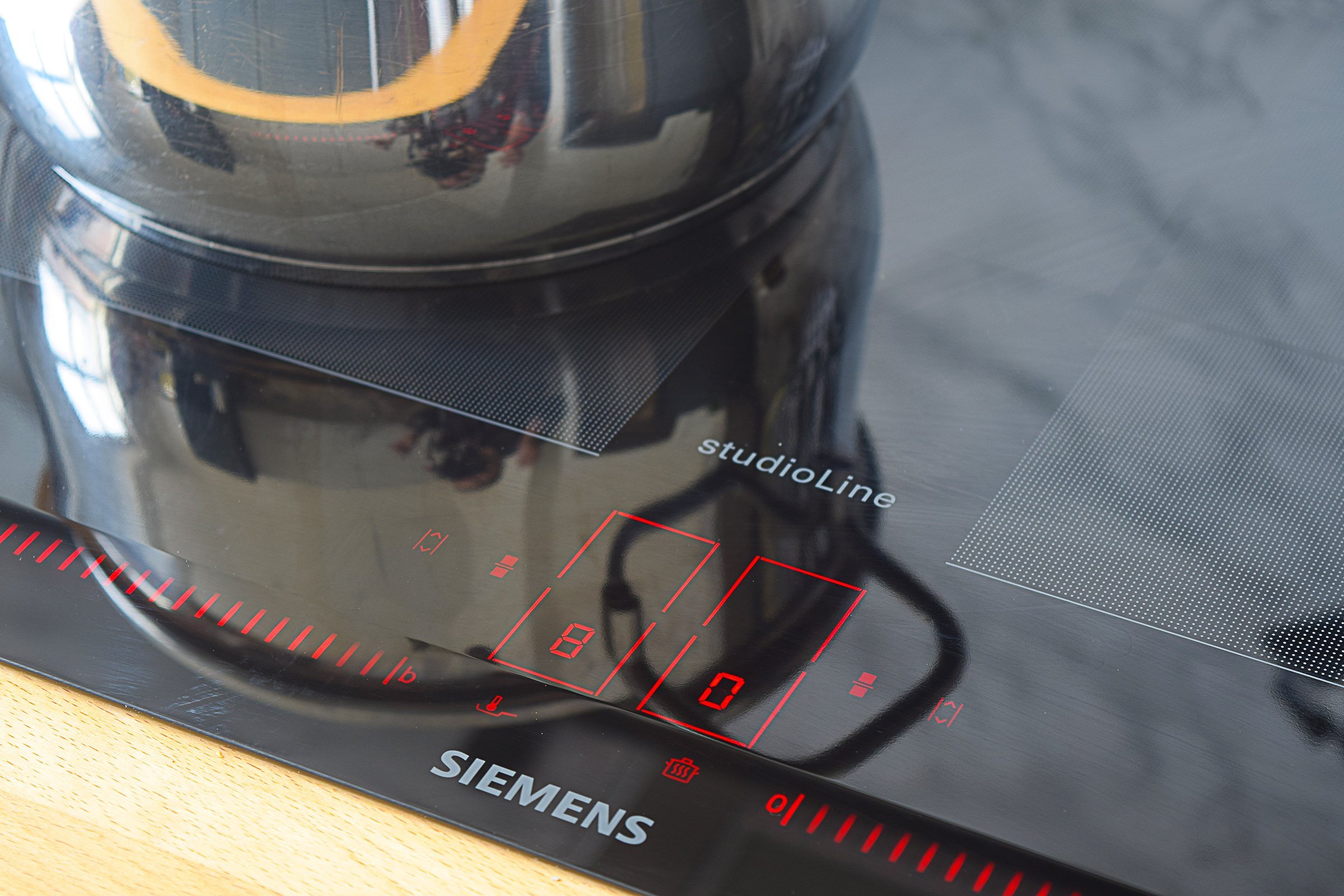
Induction hobs are safe
The actual induction hob doesn’t get hot – just the pan does. This means that if you touch the hob after removing the pan there’s no chance of you accidentally burning yourself. Don’t get me wrong, it is hot after removing the pan (just because of the residual heat of the pan) but you can touch the hob pretty much instantly – although I still wouldn’t recommend you do so!
What are the disadvantages of induction hobs?
Cooking on an induction hob takes a tiny bit of time to get used to
If you’re switching to an induction hob from a gas one there’s almost no difference. If you’re switching from an electric hob it’ll probably take a couple of minutes to get used to cooking with induction as it’s so much faster! I think a lot of people worry that it’s more difficult or will take a lot of time to get used to – don’t be! It really is super simple to use and there is almost no learning curve at all.
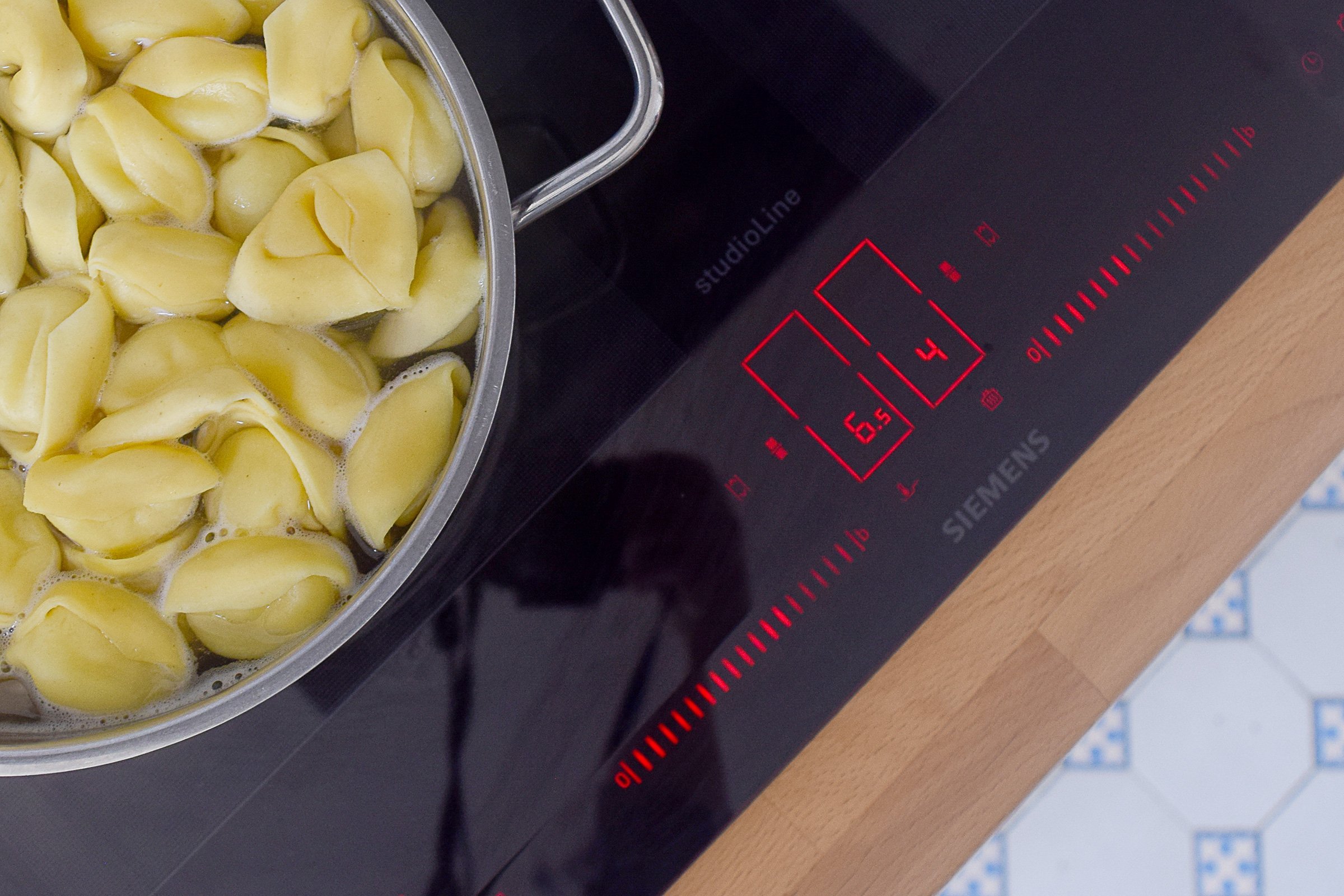
Induction hobs are quite expensive
We’re always budget conscious and there’s no getting around the fact that an induction hob is more expensive than an electric one (but not hugely so). Ours is a Siemens Studioline hob which is mid-range (it’s available as a wider 90cm version, too) and we absolutely love it and highly recommend it!
You can’t use every type of pan on induction hobs
We always knew that we ultimately wanted an induction hob so all pans we owned were suitable for use on induction. You’ll probably also find that most pans you own (if not all) are suitable.
To check if your pans work on induction hobs, look for the little induction logo on the back of your pans to make sure. As a basic rule, your pans will work if you can stick a magnet to the base of them which means that you can’t use copper or ceramic cookware unless they have a magnetic core. Great induction hob pans are cast iron pans and stainless steel pans.
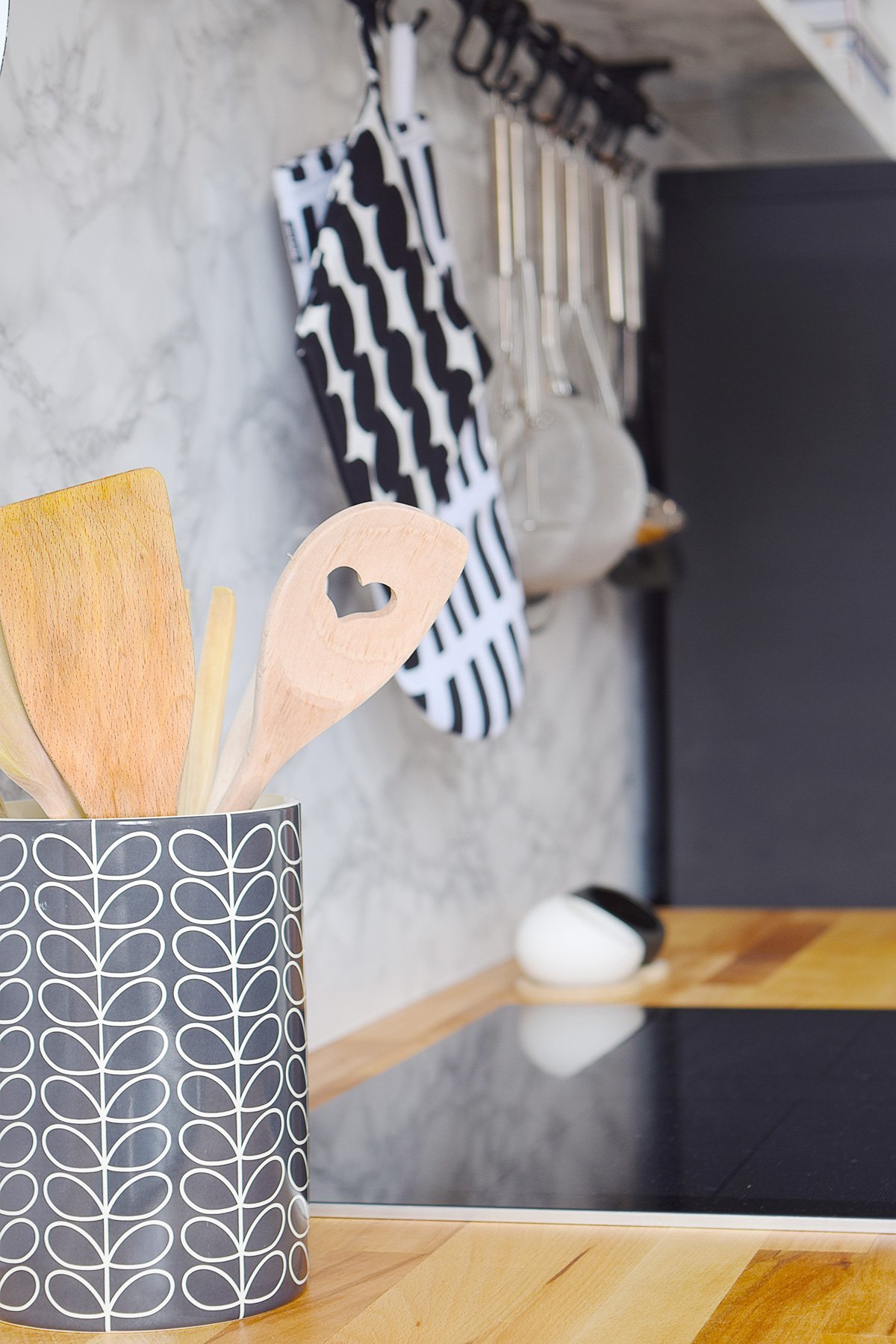
You need a bit of extra space for an induction hob
We didn’t realise that an induction hob needs more space around it for the air to circulate so, as I mentioned earlier, we had to lower our oven to make room for the hob. It generally shouldn’t be a problem but it is something that needs to be taken into consideration when you’re planning your kitchen.
We’ve had gas hobs, electric hobs and induction hobs in the various homes we’ve lived in. They all have pros and cons but by far the best induction cooktop we’ve ever used is our Siemens induction hob. Cooking with induction is amazing and once you’ve had one, you’ll never want to cook on anything else again! Our Siemens hob has lots of fancy features which are great but it’s the actual induction that’s so fantastic. It’s so quick and easy to use!
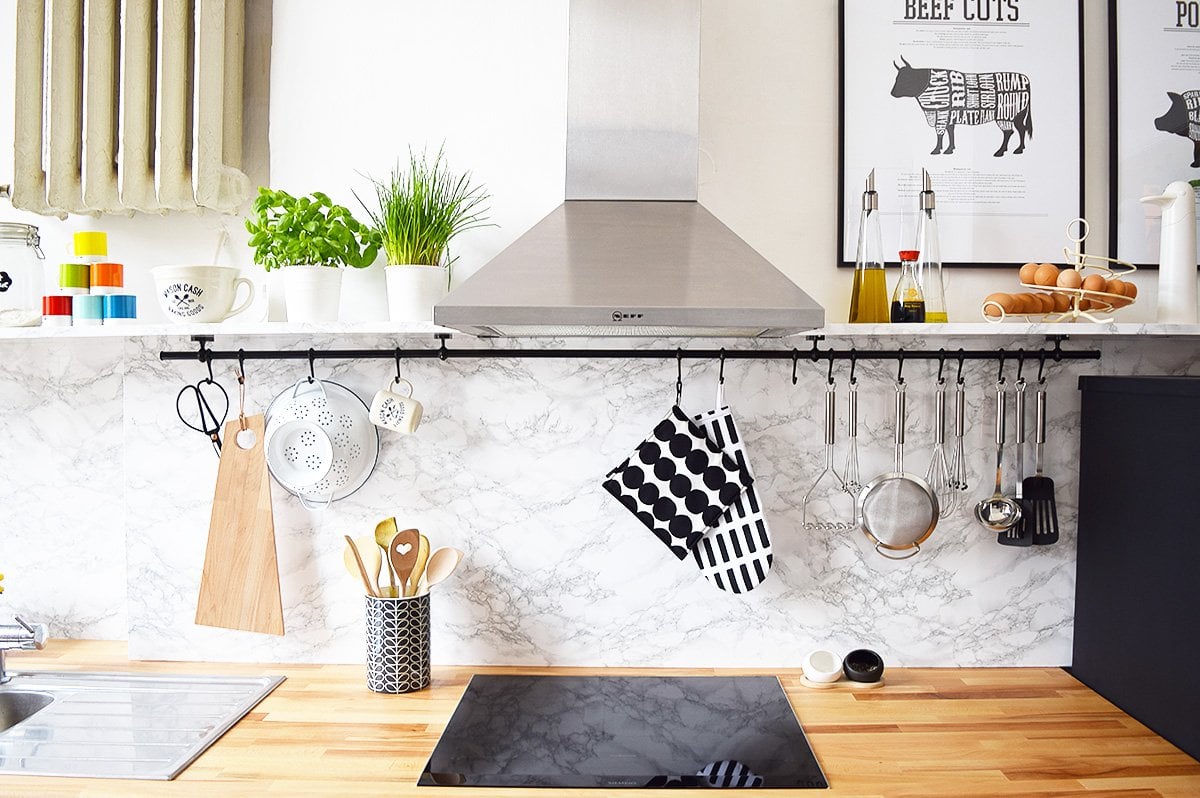
Induction Hob FAQs
Some induction hobs make a humming/pulsing sound while the pan is being heated. The sound will get quieter when the pan has warmed up though. You’ll probably also find that heavier pans hum less than lighter pans
If you have a pacemaker you shouldn’t get an induction hob as the electromagnetic field that’s generated to heat the pans can interfere with pacemakers. This doesn’t mean that you can’t have guests with pacemakers, just make sure they keep about 60cm distance from the hob to be on the safe side.
For us, the learning curve was non-existent. The only difference to a ceramic hob is that the pans on induction heat up much quicker. Induction cooktops can be precisely adjusted making it really easy to make exact changes. Don’t worry about cooking with induction being different or difficult, it’s really very straightforward and easy.
Induction hobs are energy efficient to run and can save you money compared to a ceramic hob but they are slightly more expensive to run than a gas hob.
According to Confused About Energy, induction vs ceramic hob running costs are about 30%
lower (obviously this will vary depending on current electricity and gas prices).
The average energy consumption per use is:
Gas 0.90kWh | £0.035
Ceramic 0.72kWh | £0.135
Induction 0.504 kWh | £0.094
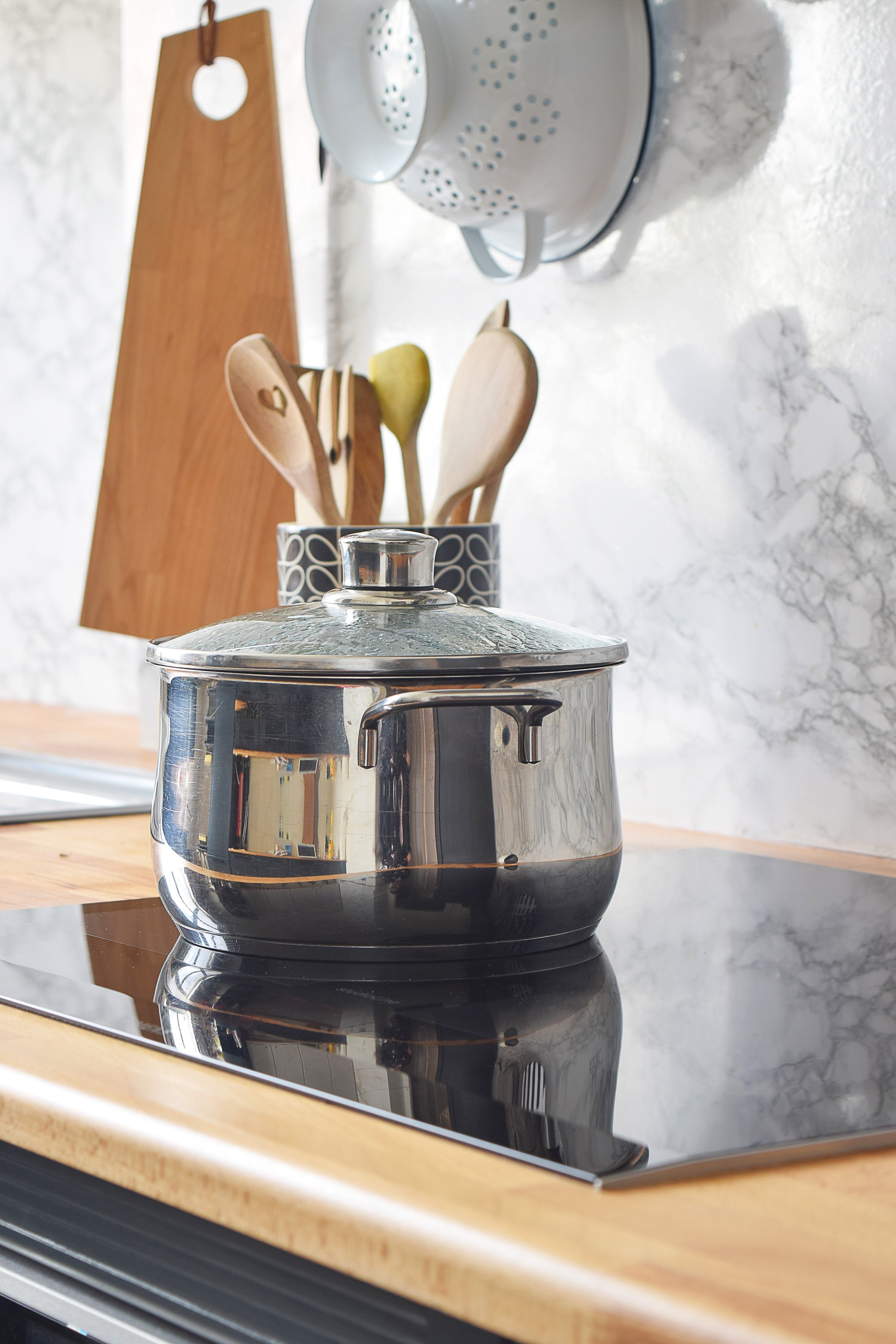
Ultimately, we are still planning on replacing the whole kitchen, even if our kitchen makeover last year did wonders and it feels like a completely new kitchen. Having said that, we will definitely be keeping our new appliances including our amazing induction hob, our dishwasher and our Slide & Hide oven.
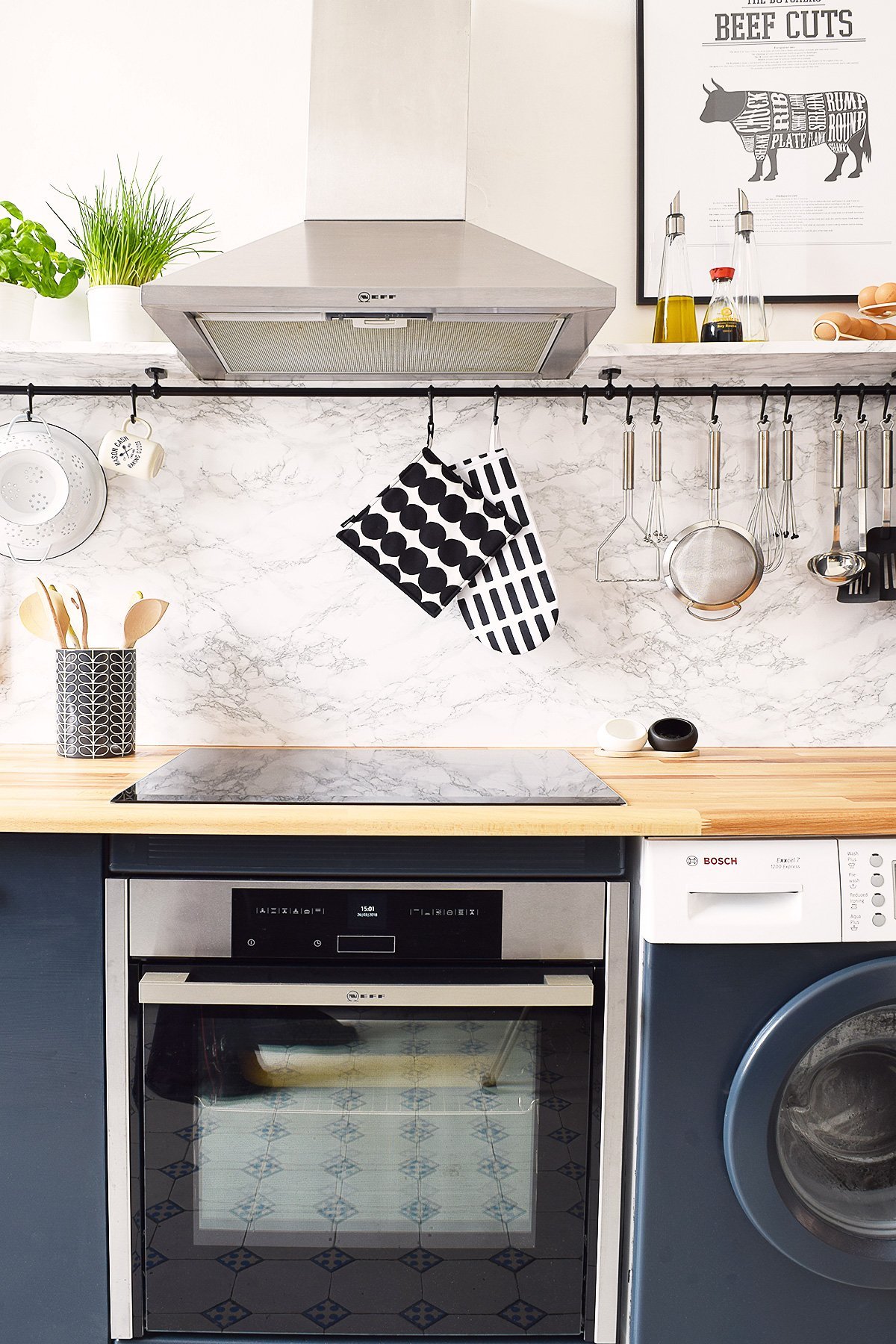
Do you have an induction hob? We’d love to hear what you think of it! Just leave us a comment below to share your thoughts with us!
*The links in this post are to a newer model of our hob as ours is no longer available. We’ve thoroughly tested our hob and, as always, we only recommend products we love and think that you will, too!

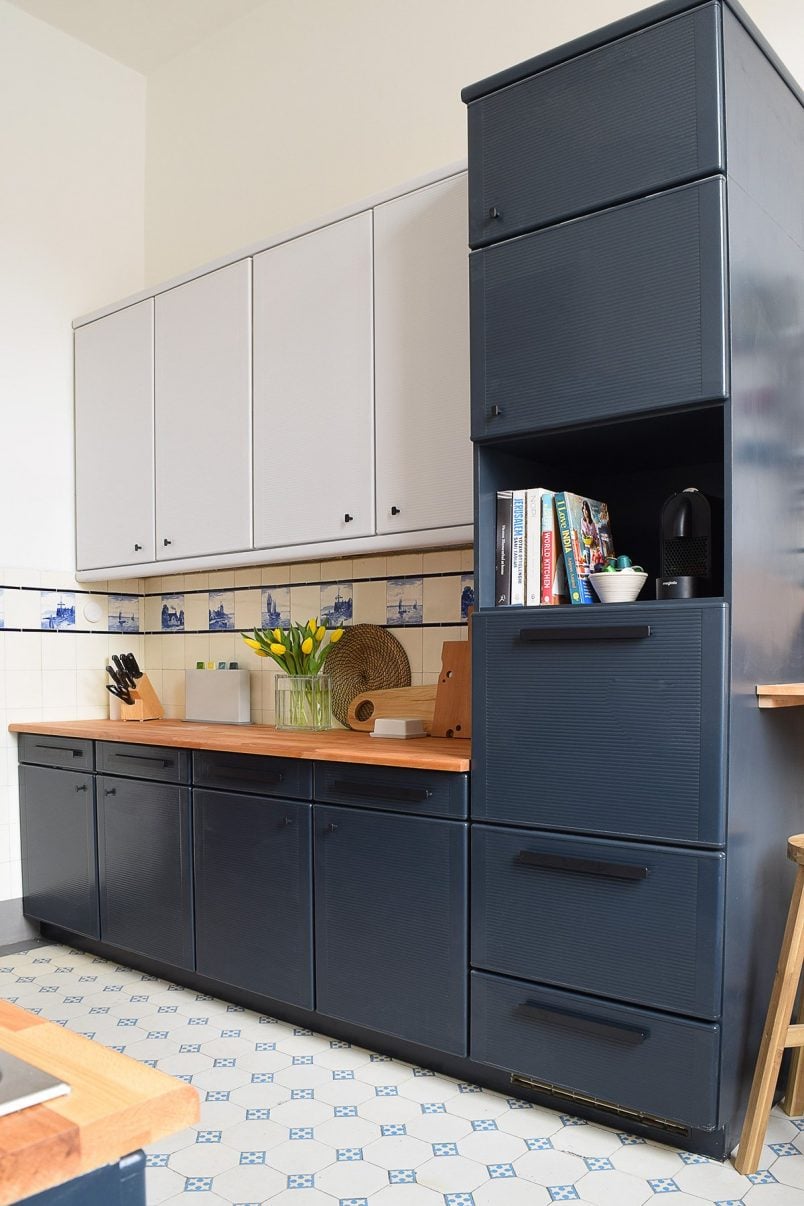
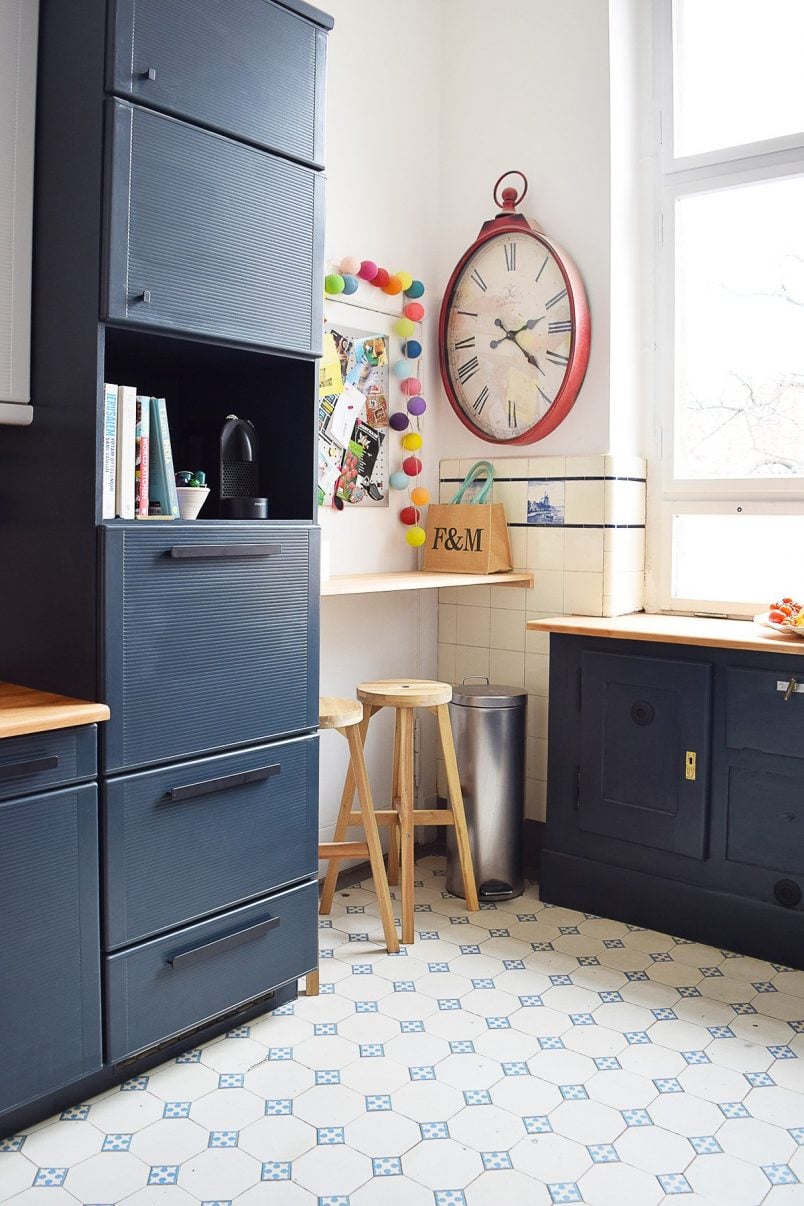
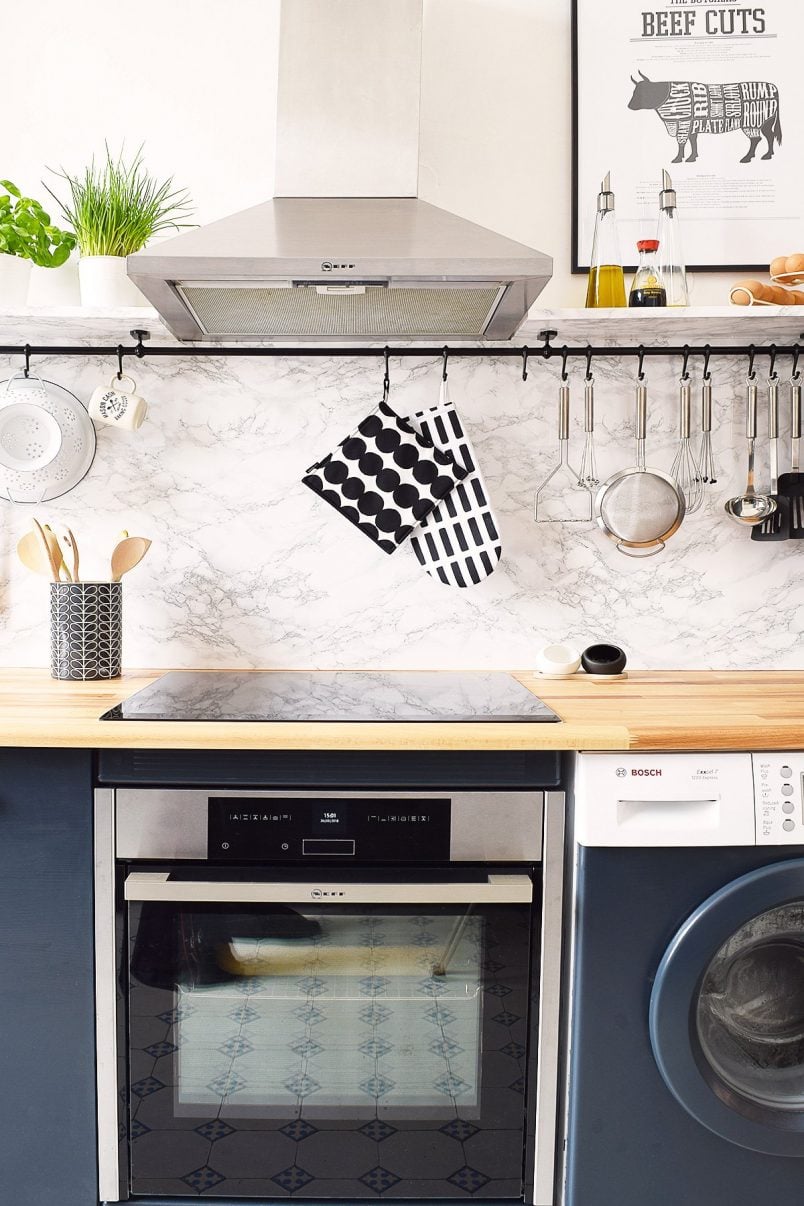
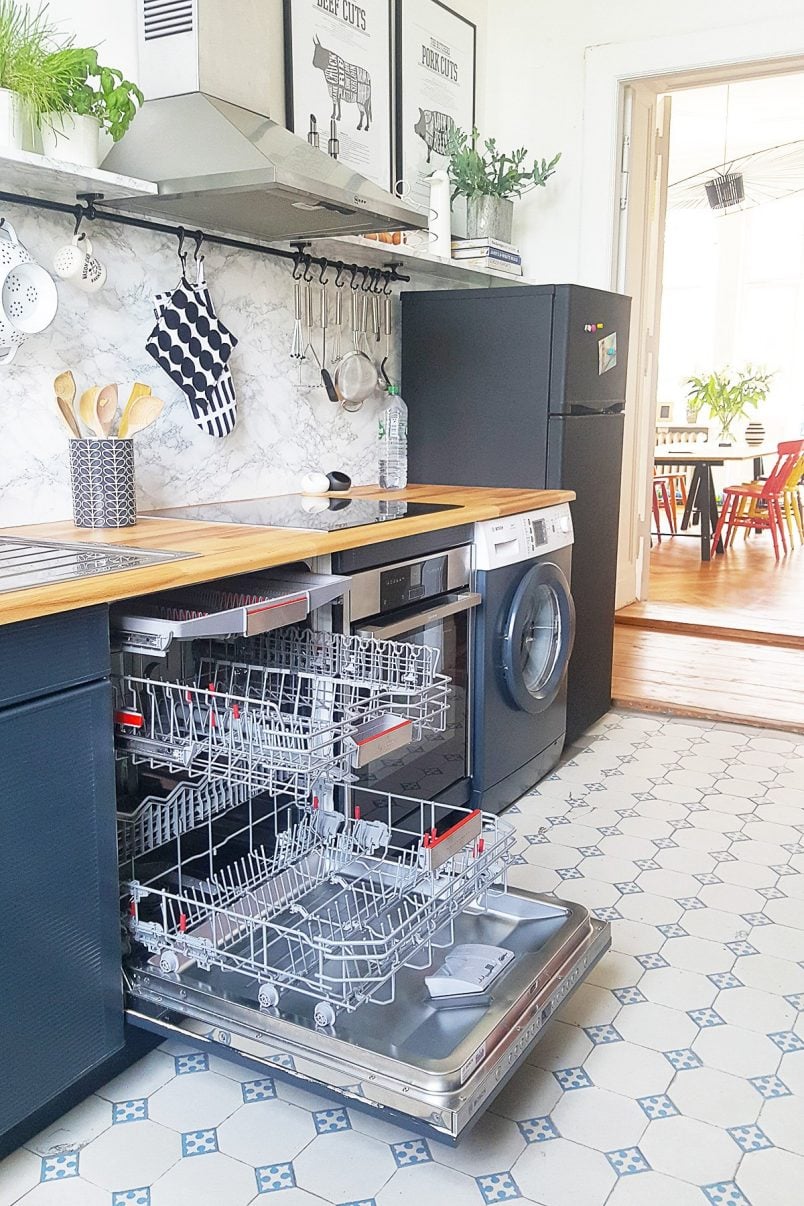

Andrea says
I also exchanged my old electric hob for an induction hob and absolutely love it. Just one hint, you can also use old newspaper in between pans and the hob to prevent to hob from scratches and even dirt while cooking. As the hob doesn’t get really hot, the paper won’t burn and it’s totally easy to clean the hob, just throw away the newspaper :-)
Christine says
Ohhh, interesting – I’d not heard of that before! I’m always super careful about not scratching our new so I might have to give that a try. Thanks for the tip, Andrea!
Cx